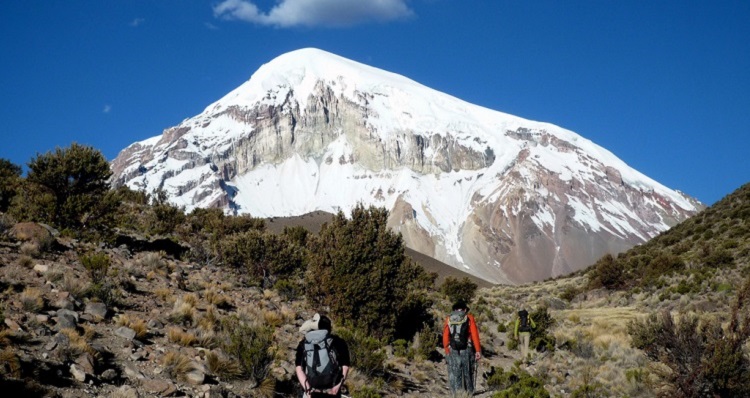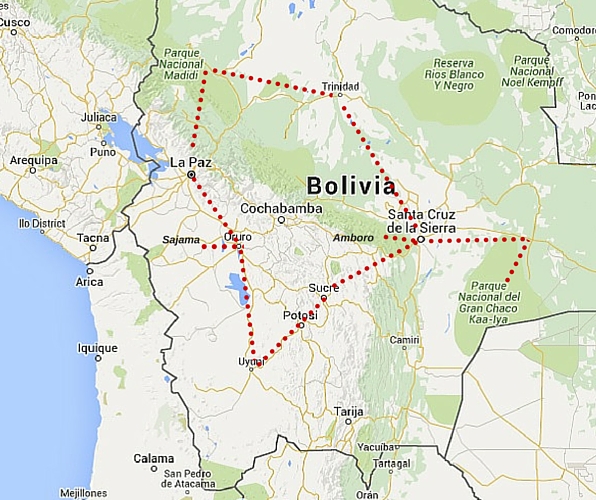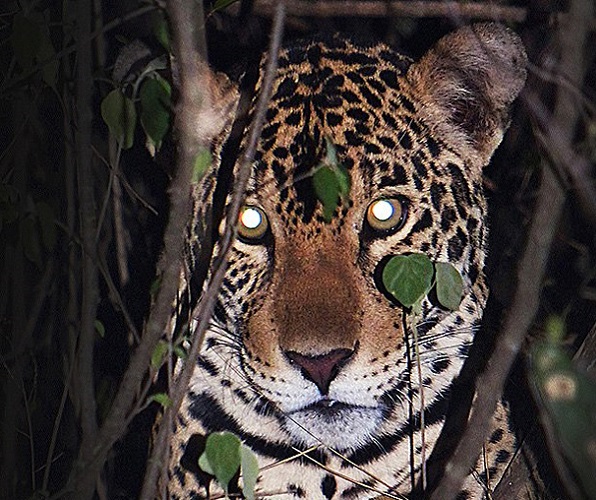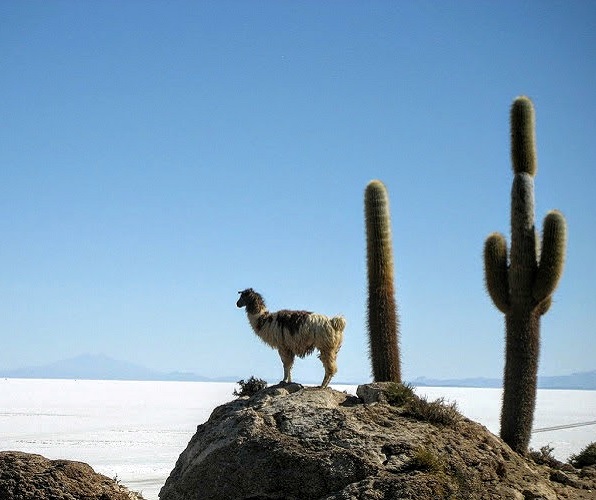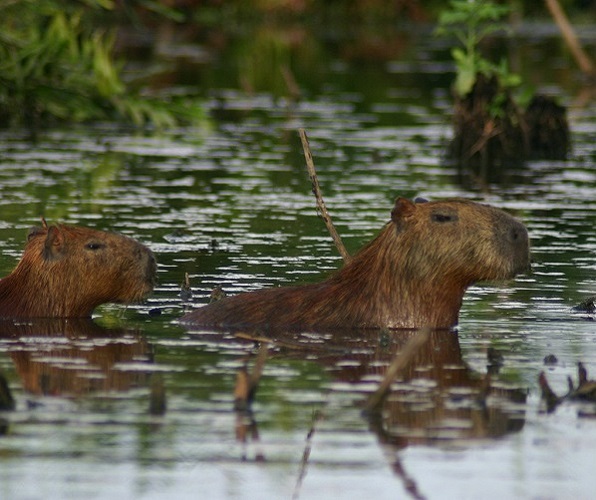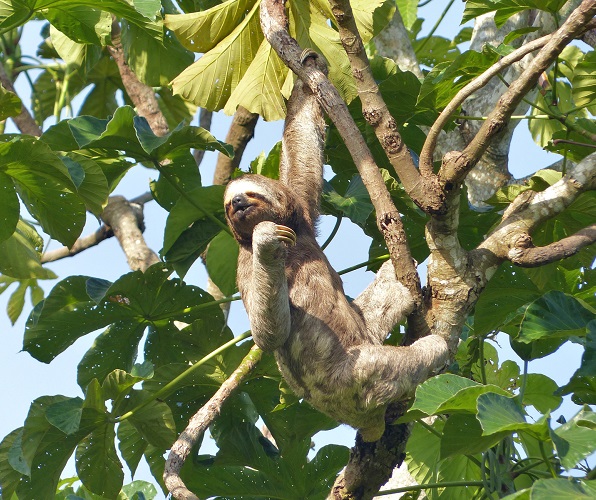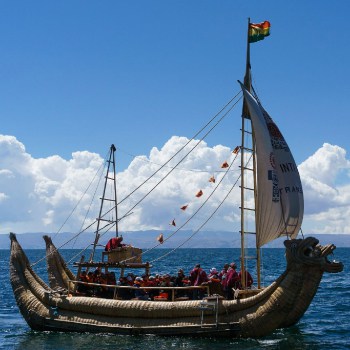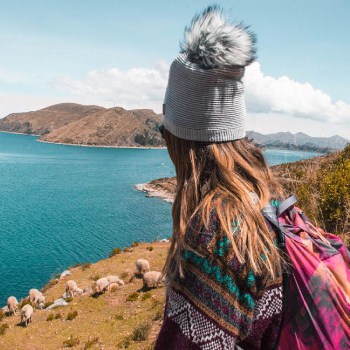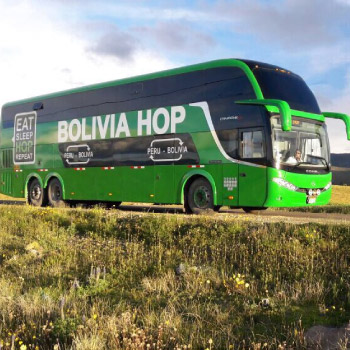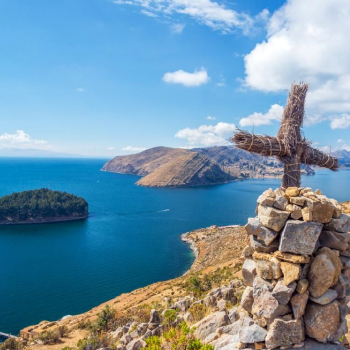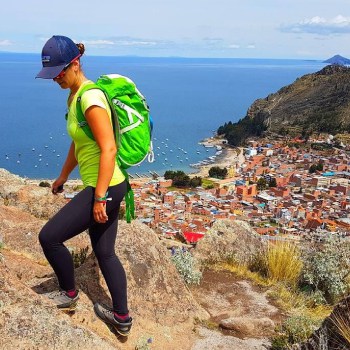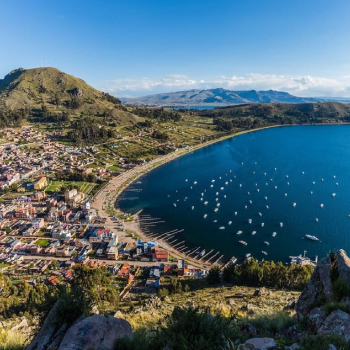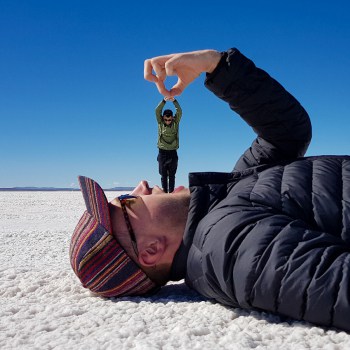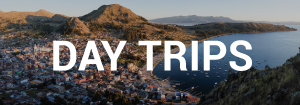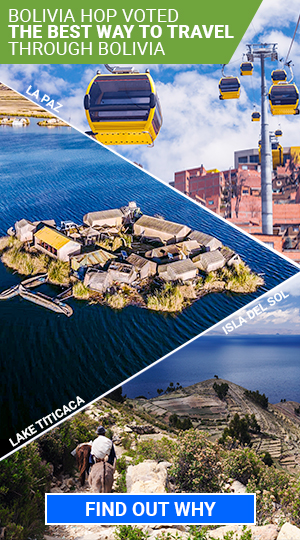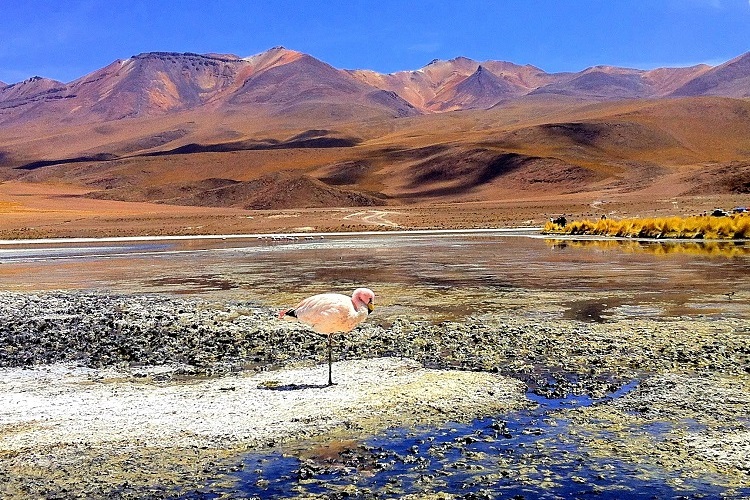 An ecological masterpiece, abundant in wildlife and teaming with precious plant species, Bolivia is one of the few places left in the world where travelers can experience mother nature at her finest.
From elusive jaguars to pink river dolphins, Bolivia’s parks and jungles are famed not only for their rich flora and fauna, but also for their remote indigenous communities and diverse landscapes. An unparalleled adventure for nature lovers, exploring Bolivia’s remote and largely untouched locations is a wonderful way to experience the types of sights, smells and sounds so rarely encountered in today’s developed world.
The following itinerary features some of the most unique and awe-inspiring natural attractions in Bolivia. Done solely as a wildlife tour, or in combination with city stops along the way, the itinerary is a great way to catch a glimpse of some of the country’s best natural wonders.
An ecological masterpiece, abundant in wildlife and teaming with precious plant species, Bolivia is one of the few places left in the world where travelers can experience mother nature at her finest.
From elusive jaguars to pink river dolphins, Bolivia’s parks and jungles are famed not only for their rich flora and fauna, but also for their remote indigenous communities and diverse landscapes. An unparalleled adventure for nature lovers, exploring Bolivia’s remote and largely untouched locations is a wonderful way to experience the types of sights, smells and sounds so rarely encountered in today’s developed world.
The following itinerary features some of the most unique and awe-inspiring natural attractions in Bolivia. Done solely as a wildlife tour, or in combination with city stops along the way, the itinerary is a great way to catch a glimpse of some of the country’s best natural wonders.
Bolivian Life Quick Tip:
As voted the best way to travel around Bolivia and Peru, we highly recommend choosing Bolivia Hop as your means of transport. Their safe, flexible and trustworthy service have proven to be the best way of getting the most out of your time in South America!
Recommended Days
21
Theme
Wildlife & AdventureStart / Finish
La Paz LoopHighlights
- Trek into pristine Amazon rainforest, learning about different flora and fauna
- Observe and photograph jaguars roaming freely in the wild
- Rappel down natural waterfalls, climb volcanoes and bathe in natural hotsprings
- Volunteer at an animal sanctuary
- Canoe, raft, fish and kayak along the jungle river
- Go horseback riding along one of the many eco-trails
- See dinosaur fossils with your very own eyes
- Take perspective photos on Salar de Uyuni
- Learn how local communities gather plants for medicine, diet and rituals
Itinerary
1. Yungas (Coroico)
Located only 2 hours from La Paz, in the subtropical Yunga Valley, is a resort-like town famed for its sunny orange groves, picturesque natural pools, scenic hikes and sweeping valley views. Because of the lower elevation, the weather in Coroico is pleasant year round, making it a popular weekend destination for those looking to escape the high-altitude chill of La Paz.
Recommended days: 2
Activity ideas:
- Hike up to Cerro Uchumach
- Swim in the fresh water rivers
- Go mountain biking and zip lining
- Rappel down natural waterfalls
- Volunteer at La Senda Verde animal sanctuary
- Walk among coca fields, coffee and banana plantations
- Cool off at the waterfall of Vagantes
- Chill out by the open air municipal pool
- Visit the small Afro-Bolivian community of Tocaña
- Hostal Chawi (Coiroico)
- Top 10 Hostels in La Paz
2. Sajama National Park
Presenting a magnificent Andean dreamscape of snowcapped volcanoes, soaring mountains, bubbling hotsprings, bird-dwelling wetlands and vast wild plains, Bolivia’s oldest national park is the perfect playground for photographers and adventurers alike. Spanning an area of 1002 square kilometers, Sajama is also part of the volcanic Cordillera Occidental, home to Bolivia’s highest mountain peak, Navajo Sajama.
Recommended days: 3
Activity and tour ideas:
- Bathe in natural hotsprings
- Get up at dawn to visit the geysers of Walla Keristo
- Go bird watching at Lauca River
- Do a 2 day hike to Lago de Alturas
- Climb Nevado Sajama volcano
- Check out the mysterious Sajama Lines
- Photograph wildlife at Lago Huanakota
- Observe fascinating works of art at the “Andean Sistine Chapel”, a beautiful church located in the colonial city of Curahuara de Carangas
- Discover Tomarapi’s cave paintings
- Interact with locals, learning about the Aymara way of life
- Hostel Sajama
3. Salar de Uyuni
In this remote corner of the world, landscapes change quicker than a shake of salt; one hour you’re surrounded by flamingos on a high altitude lagoon, and the next you’re standing on an island covered in cacti. The popular Salar de Uyuni tour is without doubt an unforgettable journey, showcasing some of the most unique and breathtaking scenery in the world.
Recommended days: 3
Activity ideas:
- Train Graveyard
- Take perspective photos on Salar de Uyuni (Uyuni salt flats)
- Check out the original Salt Hotel
- Inca Huasi Island (Fish Island / Cactus Island)
- Visit the Andean lagoons to hang out with hundreds of flamingos
- Desert of Siloli where you can see Arbol de Piedra (the rock tree)
- Red Lagoon with more flamingos
- Sol de Mañana geysers
- Dali desert
- Laguna Verde (the green lake)
- Piedra Blanca Backpackers Hostel (Uyuni)
- Hotel de Sal Luna Salada (Uyuni)
4. Parque Nacional Amboró
Located only 40 kilometers west of Santa Cruz, Amboró National Park is a jungle paradise perfect for unwinding, relaxing and getting back in touch with nature. Featuring beautiful walks, cascading waterfalls, dense vegetation, spectacular landscapes, fascinating archaeology and a great diversity of flora and fauna, it is no wonder that Amboró National Park is one of Bolivia’s greatest natural treasures.
Recommended days: 4
Activity and tour ideas:
- Visit the unique and picturesque region of Mataracú where you can try to spot rare animals like the giant sloth
- Cool off after a strenuous trek in one of Amboró‘s many crystal clear waterfalls and mountain streams
- Canoe, raft, fish and kayak along the river of Cajones del Ichilo
- Hike along the beautiful trails of La Orquídea, La Cascada, El Cóndor, Los Loros, Bosque Seco y Amboró
- Soak in spectacular panoramic views over the Volcanes mountain range at Mirador Loma Borda
- Observe giant trees, medicinal plants, ferns and much more on the well maintained “Las Palmeras” hiking circuit
- Go horseback riding along one of the many eco-trails near the Chonta Carbones community
- Walk along the “Dinosaurios” path where you can explore mysterious caves, enormous ravines and see dinosaur fossils with your very own eyes
- Spend some time in the Amboró Interpretation Center to learn about the different biological, geographic and cultural values of the National Park
- Have a picnic at the beaches of the Surutu River
- Mataracú Tent Camp (north side)
- Refugio Los Volcanes (south side)
- Jodanga Backpackers Hostel (Santa Cruz)
5. Kaa Iya National Park
Ever wanted to see a jaguar in the wild? Located in the southeastern sector of Santa Cruz, far off the beaten track, is a national park famous not only for its population of big cats and for being the largest protected dry forest in the world, but for being the only park in the Americas established and administered by indigenous people. A wonderful destination for adventurers and wildlife enthusiasts, Kaa Iya is not only celebrated for its ecological diversity, but also for its ability to showcase the powerful yet fragile relationship between man and nature.
Recommended days: 4
Activity ideas:
- Observe and photograph jaguars roaming freely in the wild
- Join an organised tour, exploring the national park for rare species of wildlife
- Go birding, listening out for the chirps of the Muscovy Duck, the Wattled Jacana, the Crested Oropendola and much, much more
- Walk to the rarely used airstrip inside the national park which is a prime spot for jaguar spotting
- Set off on a night drive, looking out for the glowing eyes of the park’s nocturnal animals
- Visit the sand-dunes in the south-east of Kaa Iya where the presence of guanacos has been confirmed
- Travel by car to the road that runs parallel to Kaa Iya’s pipeline. This is one of the best places to see a jaguar and other big mammals, especially during the warmer days
- Hotel Villa Chiquitana
- Jodanga Backpackers Hostel (Santa Cruz)
6. Parque Nacional Madidi
Traveling by boat from Rurrenbaque across the Beni river, tourists stepping foot onto the Madidi’s muddy floors will delight in the multitude of flora and fauna on offer. Traversing the rugged terrain, you will come across winding rivers, rolling grasslands, mosquito laden lakes, steep slopes, Inca archaeological sights and possibly the seldom seen indigenous people of the tropical rainforest.
Recommended days: 4
Activity ideas:
- Book a multi-day nature trek into the pristine Amazon rainforest, learning about different plants, trees, animals and bugs
- Take a sunset canoe ride along the shores of lake Chalalán looking out for monkeys, birds, capybaras and the elusive jaguar
- Go birdwatching, looking out for brightly colored macaws, orinoco geese, pied lapwings and black skimmers
- Spend time with a local community to learn how they gather plants for medicine, diet and rituals
- Explore the park at night to appreciate the sounds of the jungle and observe nocturnal animals
- Visit Macaw Clay Lick where you can witness huge troops of white lipped peccaries
- Swim with pink river dolphins
- Raft grade 1 to 3 rapids along the Tuichi River
- Use local fishing techniques to catch and release golden dorados, giant pacus, piranhas and catfish
- Enjoy a traditional “dunucuabi” dinner of catfish wrapped in leaves or fish á la “tacuara” inside bamboo from the Bolivian Amazon
- Hotel Maya de la Amazonia (Rurrenbaque)
- Madidi Jungle Ecolodge
Bolivian Life Quick Tip:
As voted the best way to travel around Bolivia and Peru, we highly recommend choosing Bolivia Hop as your means of transport. Their safe, flexible and trustworthy service have proven to be the best way of getting the most out of your time in South America!
More Ideas
Whilst the above itinerary offers a great nature and wildlife overview of Bolivia, it is in no way the only way to discover Bolivia’s countryside. There are many other interesting and unique places to visit, so if you have the time, do look into the following activities and destinations:
Travel Advice
In Bolivia, timetables and schedules aren’t always adhered to. Protests around the country can close down roads for days at a time and it’s not unheard for buses to break down, tours to be cancelled without notice and travelers to get sick. Though these occurrences are the exception rather than the rule, it’s still recommended that you be flexible with your travel plans to avoid undue stress and disappointment
Long-distance bus rides can also be booked ahead from the main bus stations; a good idea if your schedule is tight and you want to guarantee a seat on the bus.
To minimize the risk of malaria and insect bites, it’s recommended to wear long sleeved shirts and trousers, sleep under a mosquito net and to use insect repellent containing DEET, especially at night (see our guide to protecting yourself against mosquitoes). We also recommend consulting a physician prior to visiting Bolivia to get the most up to date advice on medications and vaccinations
Do not feed or touch wildlife as it changes their natural behaviour and encourages interaction with humans
Take only pictures, leave only footprints. Don’t remove anything from the national parks including plants, nuts, seeds etc.
If possible, try and book your accommodation in advance. This is especially important if you will be arriving in a new place late at night when unfamiliar areas may be unsafe. For accommodation recommendations check out the following posts:

